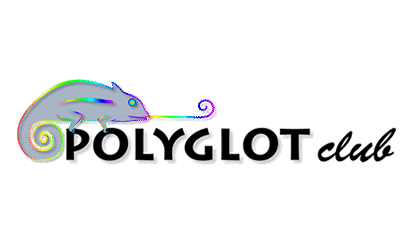Help

So you’ve decided to start learning a new language, but you're not sure where to start.
You need resources—books, courses, apps, or other learning materials to help guide your way.
What do you do?
The first place you turn to is the Internet. It only takes a few clicks of your mouse to find lists of dozens of learning materials for any language you'd like to learn.
You then find yourself in one of two different scenarios:
If you've got money, you start snapping up everything that has a good rating—maybe a grammar book, a dictionary, or a manual full of verb conjugations.
Whatever the case may be, the overall result is the same: you've grabbed up as many resources as you can get your hands on.
What happens next? Does having access to all of these resources actually make your life easier? Does it help you get off to a running start with your new foreign language?
In my experience, the answer is no. If you're not careful, having access to lots of resources can actually make things harder, instead of easier.
Let me assure you: there is a better way to choose resources. One that's easier on your mind and your money.
Let's dive in!
Why More Choice is Not Always Better
Psychologist
He calls this the "paradox of choice", and he boils it down to four factors: regret (and anticipated regret), opportunity costs, escalation of expectations, and self-blame.
1. Regret and anticipated regret - if we choose the wrong resource, we regret that we didn't choose other, possibly better ones.
2. Opportunity costs - choosing one resource costs us time and money that we can't spend on other resources.
3. Escalation of expectations - with so many options, we expect to be able to find the "perfect" resource for us.
4. Self-blame - if we choose the wrong resource from many alternatives, we only have ourselves to blame.
As language learners, how do we combat this paradox? How can we make it so that, out of all of the language learning resources available to us, we choose the correct ones?
1. Look for Resources That Match Your Level, Learning Style, and Goals
The first step to overcoming the paradox of choice is to make it so that you have less options to choose between.
To do this, you must sit down, and try to answer three questions:
→ What is my current skill level in my target language?
→ What do I find enjoyable about learning?
→ What are my language learning goals?
Skill Level
You should first limit your options to only include resources that are comprehensible to you. The types of language included in the resource should be accessible enough that you're learning new things without feeling way too overwhelmed.
Enjoyment
We all have different preferences for how we like to learn and absorb new information. Some people (like myself) love books, and other paper-based materials. Others swear by applications that turn learning into a kind of game. There are also many people that enjoy a hands-on approach to learning, where they get to directly practice everything that they're taught.
Narrow down your resources according to what you think is most enjoyable about language learning. If you find a particular format or method boring, don't use it! This even goes for more aesthetic choices, too—if a resource is too ugly, glitchy, or unreliable, you don't have to force yourself to pick it.
Goals
Your resource should also be useful in helping you reach your language learning goals. If you come across a highly-rated resource about writing, and yet you have no plans to do much writing in your target language, then you can safely ignore it.
By using these three criteria, you can heavily narrow down your options so that everything that's left is comprehensible, enjoyable, and useful to you.
2. Choose One Resource and Stick to It

At this point, you should have far less options to choose from compared to when you began.
The next step is identify the best single resource for you, and commit to it.
This is going to take a bit of research.
First, take your list of comprehensible, enjoyable, and useful resources and try to identify which ones appear to be most comprehensible, most enjoyable, and most useful. Make a ranking, if you have to.
Lastly, if you can, try to see if you can possibly get first-hand experience with your potential resources. If you're looking at book-based courses, head down to the local bookstore and flip through them. If you're interested in an app, see if there's a free trial available that you can use.
Between your own assessments and the recommendations of others, you should be able to identify the one resource that meets your needs best of all.
That's not the final step though. Once you've chosen one resource to work with, I want you to make a commitment.
Commit to using this resource and only this resource for the next three months.
Making this kind of commitment will help you avoid the regret that so often comes along with the paradox of choice, and forces you to really become familiar with a product before you possibly turn to an alternative.
3. Learn How to Get the Most Value Out of a Resource
Though you've committed to stick to one book, one course, one app, or one class for the next three months, things aren't as restricting as they may seem.
Language learning materials are tools. A tool can be used for many different purposes. A hammer, for example, can be used to build, or to destroy. To create, or to kill. The ultimate use of a hammer depends solely on the person wielding the hammer, not the hammer itself.
Your chosen language resource works in the same way. It can do many things, but the ultimate effect you'll gain from it is up to you.
You've surely seen this first-hand, in language classes at school. Though everyone starts at the same level, with the same books, certain people perform far better than others.
To use your selected resource in the most effective way possible, you need to see it as a way to build procedural skills, rather than declarative knowledge.
Procedural skills consist of the knowledge of how to do something. Language, in reality, is all about procedural skills—how to pronounce certain sounds, how to intone a sentence correctly, how to listen effectively.
Language does involve some declarative knowledge, sure, but it's mostly a vast set of procedural skills. So when you start using your chosen resource, you need to interpret (or reinterpret) the content within that resource to help you improve specific skills.
→ Making lists of individual words → Practice rearranging words and phrases to form new, meaningful sentences
→ Studying grammar explanations → Practice using that grammar structure in context, either through speaking or writing
→ Drilling verb tables → Practice using those verbs in a variety of spoken or written sentences.
The easy way to tell if you're learning something in a declarative way instead of a procedural way is to ask yourself this:
"Does it feel like I'm memorizing something, or using it?"
Aim to use your resource to practice procedural skills, as much as possible.
Grab Your Chosen Resource and Learn a New Language
In a world where finding good language learning resources is the easiest it has ever been, it can be surprising how hard it is to actually get any learning done.
In this article, I've outlined a way for you to overcome that obstacle.
You should:
→ Search for comprehensible, enjoyable, and useful learning materials
→ Commit to using one resource at a time
→ Learn how to extract the most value from that resource
Written by
Related topics:
- How to have fun while learning English.
- How to start an adventure with Polish
- How to Learn the Korean Writing System in Just a Few Hours:
Comments
 1
All
1
All
 | vincentNovember 2021 Excellent article Luca, THANKS 😎😀 |
 English
English














































 Source: Luca Lampariello
Source: Luca Lampariello